By Blaine Taylor
For the Allied tankers and infantrymen of the American, British, Canadian, and Free French armies battling German Panther and Tiger tanks in Normandy in the summer of 1944, the Sherman tank’s failures were glaringly evident as their own shells bounced off the hulls of the Nazi armor and they were themselves destroyed at a far greater range by the powerful German tanks.
It was, therefore, somewhat ironic that the outgunned and lighter armored Shermans nevertheless defeated the retreating Nazis by their sheer weight of numbers. Today, more than seven decades after the end of the greatest war in military history, the debate continues. Was the American-designed and -built Sherman M4 medium tank a colossal blunder, a wonder weapon, or both?
Author Philip Trewhitt wrote, “The Medium Tank M4 Sherman used the same basic hull and suspension as the M3, but mounted the main armament on the gun turret rather than the hull. Easy to build and an excellent fighting platform, it proved to be a war-winner for the Allies. By the time production ceased in 1945, more than 40,000 had been built. There were many variants, including engineers tanks, assault tanks, rocket launchers, recovery vehicles, and mine-clearers. The British employed the Sherman extensively, notably at the Battle of El Alamein in 1942. Though outgunned by German tanks and with insufficient armor to compete in the later stages of the war, the sheer numbers produced overwhelmed enemy armored forces. Its hardiness kept it in service with some South American countries until very recently.”
The Evolving M4 Sherman Series
With a crew of five, the Sherman weighed over 66,000 pounds, was 19 feet, four inches long, eight feet, seven inches wide, and nine feet high. It had a range of 100 miles, armor of .59-2.99 inches thick, and a single 75mm turret gun, plus one coaxial 7.52mm machine gun and a .50 caliber machine gun on the turret. The power plant consisted of twin General Motors 6-71 diesel engines that developed 500 horsepower. Its maximum road speed was 30 miles per hour, and it could ford a stream three feet deep, mount a vertical obstacle two feet high, or cross a trench seven feet, five inches wide.
The M4 series entered service in 1941, and was built by American automobile manufacturers Chrysler, Ford, and General Motors. Both hulls and turrets were either welded or cast. The five-speed transmission was a synchromesh with front sprocket drive and a controlled differential, while the vertical volute suspension was changed to horizontal on later models, and its fuel capacity was between 140-175 gallons.
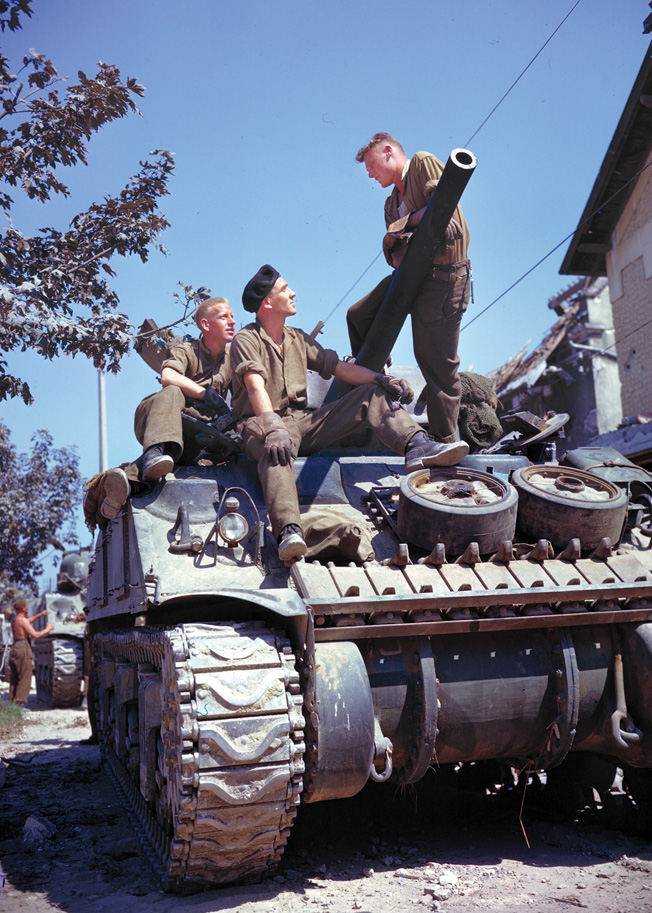
The most refined Sherman model was the M4A3. It differed from the M4A2 primarily in turret and suspension, utilizing the horizontal volute spring system, while its armament was the more effective high-velocity 76mm gun and its armor was thicker in vulnerable areas.
Ford built the M4A3 between June 1942 and September 1943, and later Grand Blanc produced the variant. Other improvements were a vision cupola for the commander, wet ammunition storage, and a loader’s hatch.
The M4A3 Sherman medium tank also had a five-man crew, a weight of 71,024 pounds, and a range of 100 miles. Its length with gun was 24 feet, eight inches, and the hull length was 20 feet, seven inches. Its width was eight feet, nine inches, and its height was 11 feet, 2.85 inches. Its armor plating was up to 3.94 inches, and a single 7.62mm coaxial machine gun complemented the 76mm main weapon. The powerplant consisted of a Ford GAA V8 gasoline engine developing 400-500 horsepower. Its maximum road speed was 30 miles per hour, and its fording ability was three feet. It could surmount a vertical obstacle two feet high and a trench 7 feet, five inches wide.
40,000 Shermans vs 6,635 Panzers
Against those 40,000 Allied Shermans, the Nazis fielded but 1,835 Tiger and King Tiger tanks and 4,800 Panther tanks, for a grand total of 6,635. Some estimates of Sherman wartime production reach an astounding 50,000.
Ironically, the United States entered World War II without an armored fighting vehicle such as the Sherman available. Thus, its new design was developed too quickly and the normal, slow-moving series of developmental stages was cast aside in favor of getting the M4 into immediate mass production. The Allies paid for this hasty decision later on in the summer of 1944 in the fields and hedgerow country of embattled Normandy against far superior German armor.
The enormous production numbers also resulted from this initial strategic decision to produce Shermans in large quantities rather than wait for a heavier armored vehicle, such as the M26 Pershing heavy tank, which finally arrived just before war’s end in 1945.
On the pro side of the ledger, the M4 Sherman was technically uncomplicated, reliable, and mechanically well constructed. It also helped that the Allied air forces enjoyed a huge aerial superiority over the virtually beaten German Luftwaffe. Working in tandem with well-coordinated Allied infantry, artillery, and air forces, the plentiful and trusty Shermans were able to vanquish most German armored formations simply by ganging up on them in overwhelming numbers when all else failed.
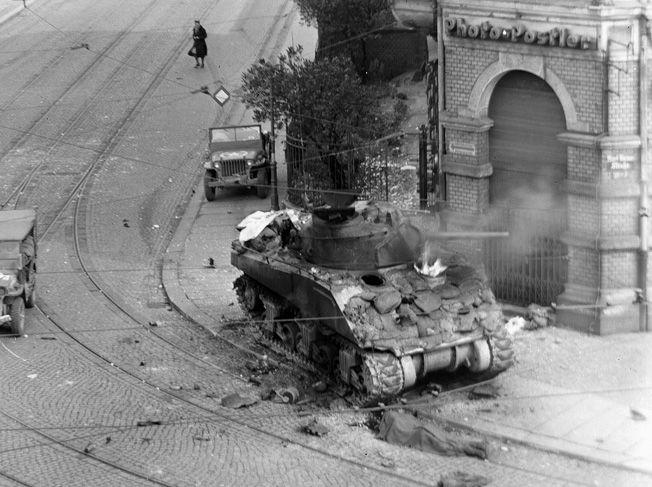
On the con side, however, the Sherman’s 75mm and 76mm guns just could not pierce the mighty Tiger tank’s frontal armor even at short range while the latter could vanquish the Shermans with impunity from greater distances. Another drawback was that, unlike the German tanks and the Soviet-built T-34 medium tank, the Sherman made a far more visible target in combat because of its height.
In addition, noted one source, “In fact, to destroy a German Tiger, the Shermans had to hit it from the side or from behind, and obviously if the Tiger saw them approaching, it could destroy some Shermans before the others could eventually destroy it.” That was, alas, too often the case.
Powerplants for U.S. tank production were always a major problem, and eventually this led to the development of the 8-cylinder Ford-produced engine. Although originally designed for aircraft, the Ford 8 cylinder was gasoline fueled and had 500 gross horsepower. Following testing, the engine was authorized by January 1942 for Sherman usage by the U.S. Army Ordnance Committee, and with the new engine, the first M4A3 was completed by May 1942.
Testing was completed at the General Motors Proving Ground, with minor changes being made. By September 1943, fully 1,600 tanks had been constructed when Ford ceased production. This was taken over by the Detroit Tank Arsenal and also the Fisher Tank Arsenal, and by mid-1943 there were already numerous other changes.
Stated one account, “Distinguishing turret features included an all around vision cupola for the commander—except in early production, which retained the earlier circular split ring hatch—and an oval shaped loader’s hatch. Those vehicles produced with the circular split ring commander’s hatch had it replaced by the all around vision cupola in the field as supplies became available.”
The Widely Used M4 Sherman
The Canadian Army replaced its Ram tank with the versatile Sherman model for the invasion of Italy in July 1943. Sherman tanks were also produced in Canada under license agreement.
Named after the American Union Army General William Tecumseh Sherman, the M4 medium tank was used not only in World War II, but also in the Greek Civil War, the Arab-Israeli War of 1948, the Korean War, the Suez Crisis of 1956, the Indo-Pakistani War of 1965, the Arab-Israeli War of 1967, the Indo-Pakistani War of 1971, and the 1973 Arab-Israeli War.
The M4 Sherman’s Debut
The original M4 was debuted on August 31, 1940, with final characteristics completed on April 18, 1941 at the Aberdeen Proving Ground. The first pilot M4 was finished on September 2, 1941, and then put into mass production during February 1942. Altogether, there were seven models: M4, M4A1, M4A2, M4A3, M4A4, M4A5, and M4A6.
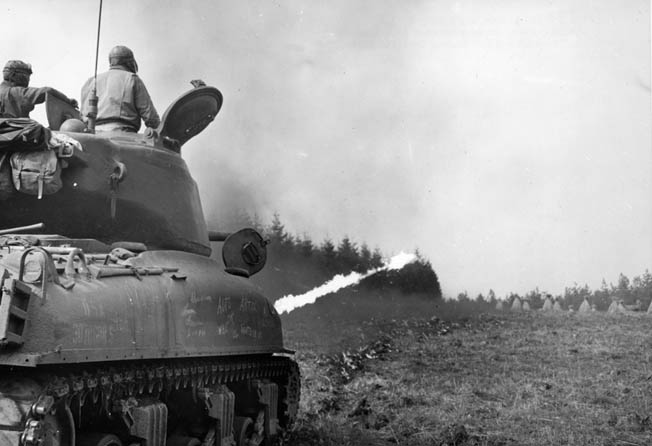
Stated one account, “The sub types differed mainly in terms of engine, although the M4A1 differed from the M4 by its fully cast hull rather than by engine; the M4A4 had a longer engine system that also required a longer hull, longer suspension system, and more track blocks. The M4A5 was an administrative placeholder for Canadian production, and the M4A6 also elongated the chassis but totaled fewer than 100 tanks. Only the M4A2 and M4A6 were diesel; most Shermans were gasoline fueled.”
“The Best in the World”
Author David Irving has noted the shortcomings of the Sherman in combat along with the painful awareness of Allied commanders and tankers in the field. “The superiority of the Nazi tanks was nothing new to the Allied commanders,” he wrote. “It had been reported by tank crews on the Anzio beachheads … C.L. Sulzberger of the New York Times had tried to expose the scandal: that the Sherman tank’s armor was inferior to the Tiger tank’s, that its gun was outranged by the guns of the Mark IV special and the Tiger, and that the new German anti-tank gun had twice the velocity of the best American weapon…. There was no doubt that, in Normandy—as at Anzio—the Americans were finding that their weapons were inferior…. For the Americans, too, however, the most serious headache was the superiority of the Panther.”
Pilot production on the Sherman tank began in November 1941, just before the U.S. entered World War II, and the very next month the official design was approved. The Medium Tank M4 was the welded-hull version with the Medium Tank M4A1 the cast-hull model. Both models entered quantity mass production by the early summer of 1942.
At the Battle of El Alamein against German Field Marshal Erwin Rommel’s famed Afrika Korps, Field Marshal Bernard Montgomery’s British Eighth Army deployed 400 Shermans and 650 other tanks versus the enemy’s 200 Mark IVs and 200 Mark III tanks.
Noted one source, “The Sherman proved far superior to both of these types and—although the enemy was aware of the Sherman before Alamein, and knew the British had some—they completely underestimated the Sherman’s potential, and the results of their poor judgment proved disastrous.”
Following their victory over the Germans at El Alamein, the ecstatic British claimed that the Sherman was “the best in the world.” It was they who named it the General Sherman but soon shortened it to Sherman alone.
It was also following El Alamein that the vaunted combat vehicle received its first close reexamination. The British observed, “Overall, armor was rated as good, and front armor especially good. One improvement in its armor that was recommended was the welding of one-inch-thick reinforcing plates on the outside of the hull, where they would protect drivers and the ammunition supply. The applied plates became a very distinctive feature of the Sherman from then on.”
This same post-combat examination revealed but one serious weak point overall—that it caught on fire too easily when hit. In addition, if the floor escape hatch was open, it created a chimney effect, thus making the fire itself far worse. Thus, even before the end of the North African campaign most tankers welded the escape hatch shut, and the U.S. Army gave the Sherman, too soon as it later developed, its seal of approval.
The ‘Easy Eight’ and Other Modifications
In late June 1944, the U.S. Army Ordnance Corps accepted a limited run of 254 M4A3E2 Jumbo Shermans with extremely thick armor and the new high-velocity 75mm or 76mm gun in the new and heavier T23-type turret to be used in attacking fortifications. It was also the first to be factory produced with the new HVSS suspension with extra wide tracks for lower ground pressure.
Stated one account, “The smooth ride of the HVSS with its experimental E8 designation led to the nickname ‘Easy Eight’ for Shermans so equipped. Among the later developed Sherman special attachments were the bulldozer blade, the Duplex Drive for ‘swimming’ tanks, the R3 flamethrower for Zippo flame tanks, and the T34 60-tube 4.5-inch Calliope rocket launcher for Sherman turrets.”
The Sherman chassis also undertook many other roles, including acting as minesweepers and self-propelled guns.
M93 Hypervelocity Armor Piercing HVAP ammunition, a new projectile that could pierce the turret of the Panther tank at longer ranges than the more standard Sherman ammunition, was standardized for the 76mm gun by July 1944, but its distribution was limited to U.S. tank destroyer units only.
Noted one source, “In the relatively few Pacific tank battles, even the 75mm gun Shermans outclassed the Japanese in every engagement. The use of High Explosive (HE) ammunition was preferred because antitank rounds punched cleanly through the thin armor of the Japanese tanks (light tanks of 1930s era design) without necessarily stopping them. Although the high-velocity guns of the tank destroyers were useful for penetrating fortifications, Shermans armed with flamethrowers also destroyed Japanese fortifications. There was a variety of types of flamethrowers, differing primarily in the type and location of launcher, and the U.S. used similar devices on other tanks and LVTs, and also used flamethrowing Shermans in Europe.”
Making Improvised Armor For the “Tommycooker”
Because of its propensity to catch fire, the Sherman soon gained several nicknames. “Tommycooker” (which was a World War I trench cooker), “Ronsons” (a la the cigarette lighter that were guaranteed in their ads to “Light up the first time, every time!”), and also what the Free Poles called “The Burning Grave.”
As for the cause of the fires, U.S. Army research proved that the major reason was the use of unprotected ammunition stowage in sponsons above the tracks. The common myth that that the use of gasoline engines was a culprit is unsupported. Gasoline was unlikely to ignite when hit with armor piercing shells.
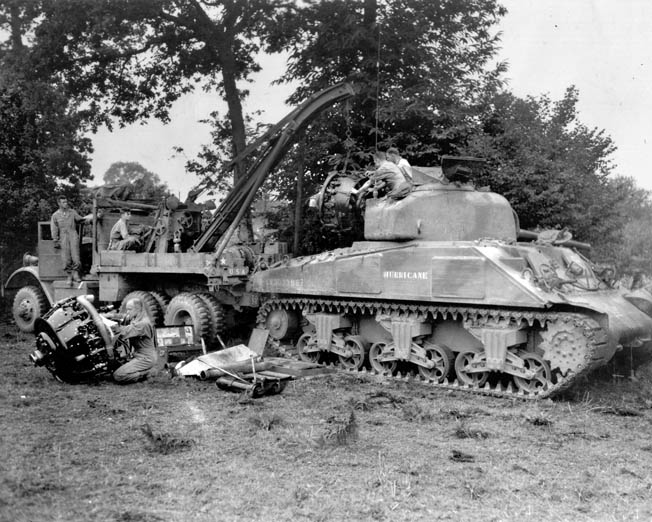
At first, a partial remedy to ammunition fires was found by welding one-inch-thick applied armor plates to the vertical sponson sides over the ammunition stowage bins. Later models moved ammunition stowage to the hull floor, with additional water jackets surrounding the main gun ammunition stowage. This decreased the likelihood of brewing up. In time, thicker armor was added to both the turret and the hull front, and the troops themselves placed sandbags, spare track links, helmets, wire mesh, and even wood, for better protection against shaped-charge rounds.
General George S. Patton Jr. forbade the usage of sandbags and instead ordered that the Shermans have extra armor welded to the front hulls taken from destroyed American and German vehicles. He had been advised by his technical experts that the sandbags actually increased the Shermans’ vulnerability and also that their chasses suffered from the added weight.
Accordingly, about 36 of these Shermans with thicker armor were supplied to each of the armored divisions of the Third Army in early 1945. The rare M4A3E2 Sherman Jumbo variant had even thicker frontal armor than the German Tiger I.
The Sherman had good speed both on the road and traveling cross-country. In the desert, the Sherman’s rubber tracks performed well, while in Italy, it could cross hilly terrain that German armor could not. Tankers found that on soft ground, such as snow or mud, the narrow tracks provided poor ground pressure compared to those of German tanks.
A “Superior Tool of War” or a “Death Trap”?
Ironically, the majority of the losses of Sherman tanks were not from tank versus tank battles, but, rather, from mines, aircraft, infantry antitank weapons, and even friendly fire.
The controversy over the Sherman continues, however. Author Belton Y. Cooper even referred to them as “death traps,” with a loss rate in his own 3rd Armored Division of over 580 percent, while, conversely, noted one source, “Patton argued that the Sherman tank was overall a superior tool of war.”
Among the many Sherman variants were Lend-Lease tanks, postwar vehicles, British Sherman Firefly tanks mounting the reliable 17-pounder gun, and others. Indeed, vehicles that used the Medium Tank M4 chassis or hull included the 3-inch Gun Motor Carriage M10 Tank Destroyer, also known as the Wolverine,; the M32 and M74 TRV recovery tanks; the M34 and M35 artillery tractor prime movers; the M4A3R3 Zippo and M4 Crocodile flamethrower tanks; the T34 Calliope, T40 Whizbang, and other Sherman rocket launching tanks; and the Duplex Drive swimming vehicles and other deep-wading Shermans.
There were also the D-8, M1 and M1A1 dozers, M4 Doozit, Mobile Assault Bridge, and Aunt Jemina engineer tank mine clearers, the Jackson 90mm Gun Motor Carriage M36 tank destroyer, the Priest 105mm Howitzer Motor Carriage M7 self-propelled artillery, the 155mm GMC M12 with Cargo Carrier M30, the 155/203/150mm Motor Carriages, 155mm GMC M40, 8-inch HMC M43, 250mm MMC T4, and Cargo Carrier T30.
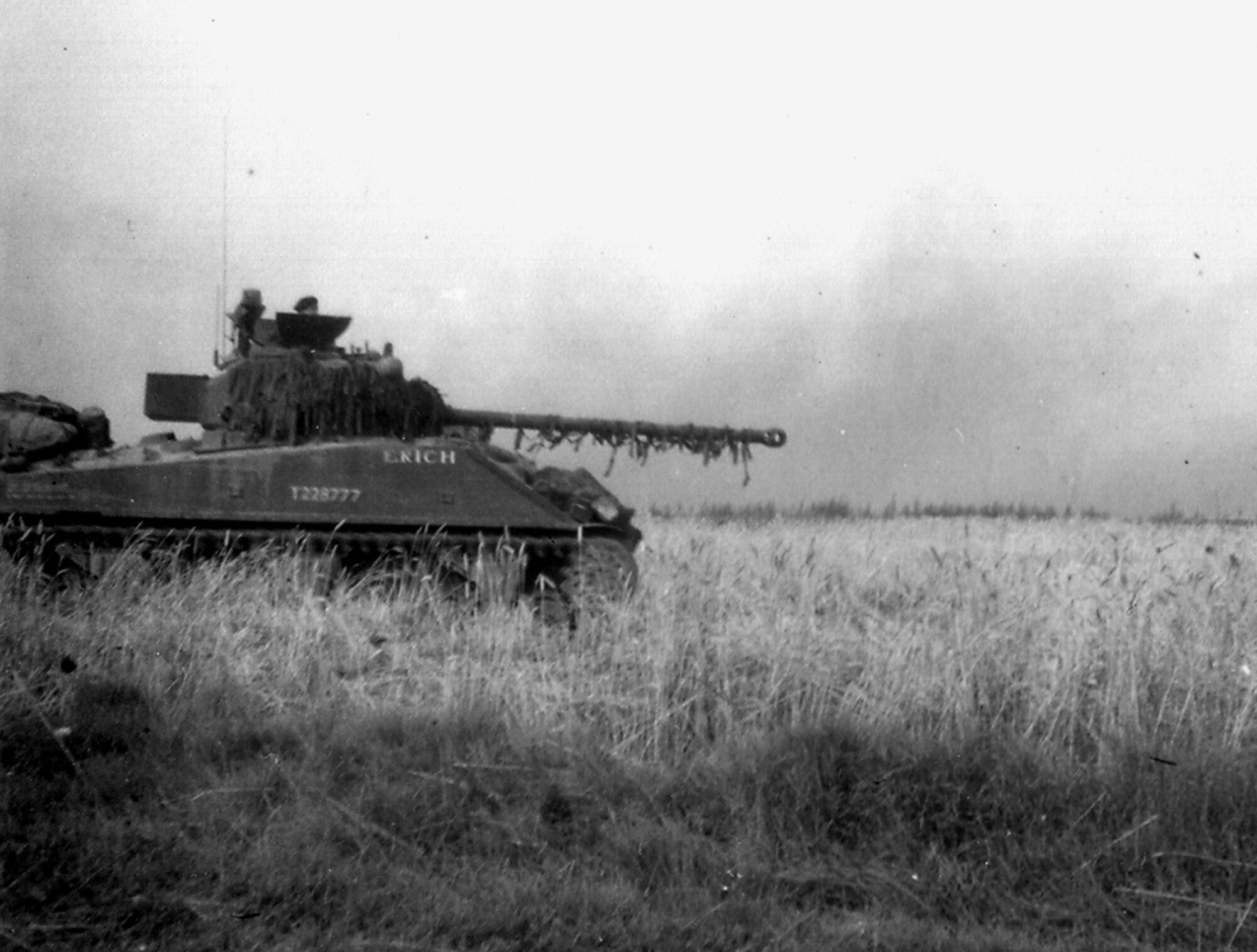
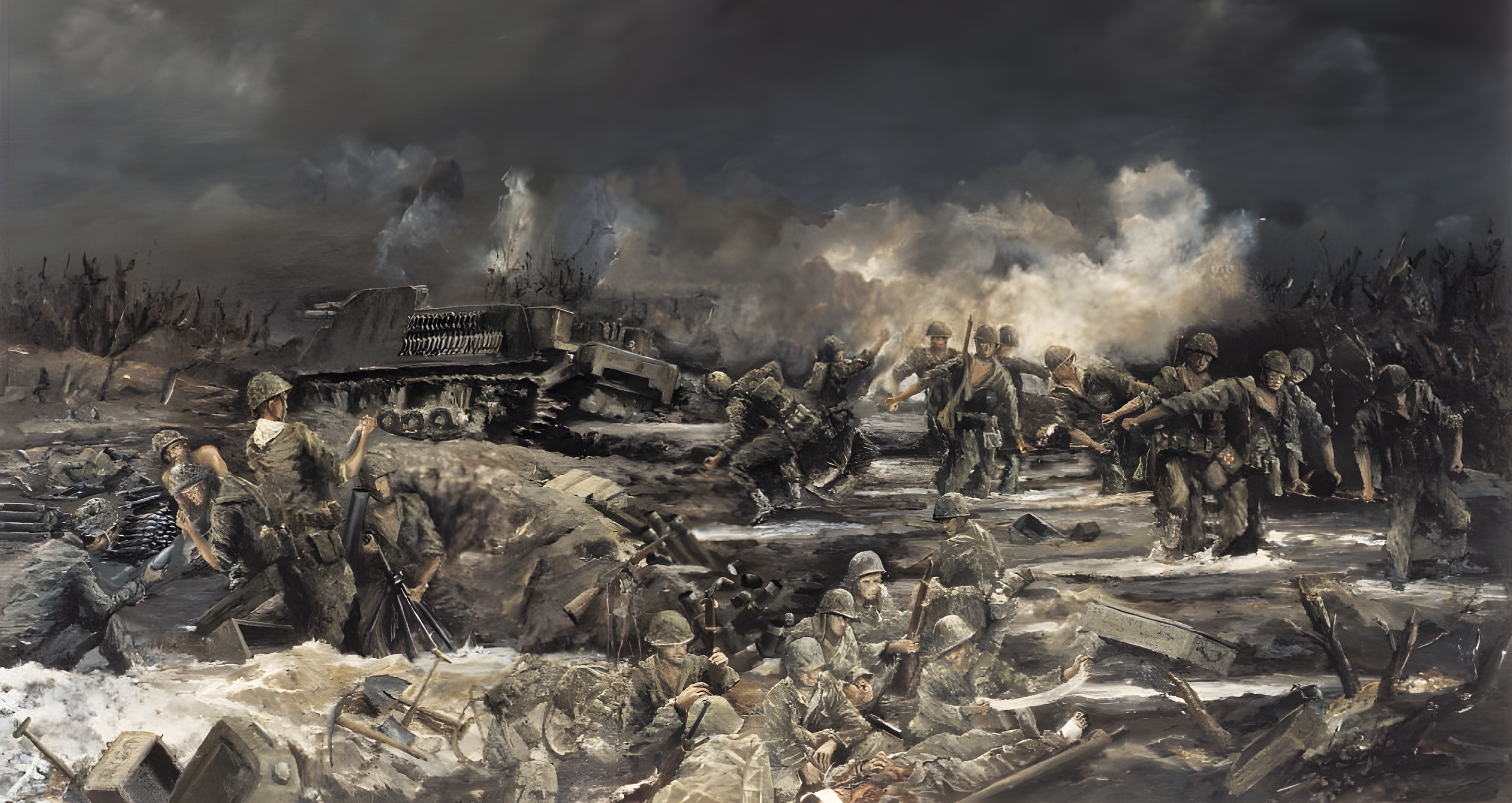
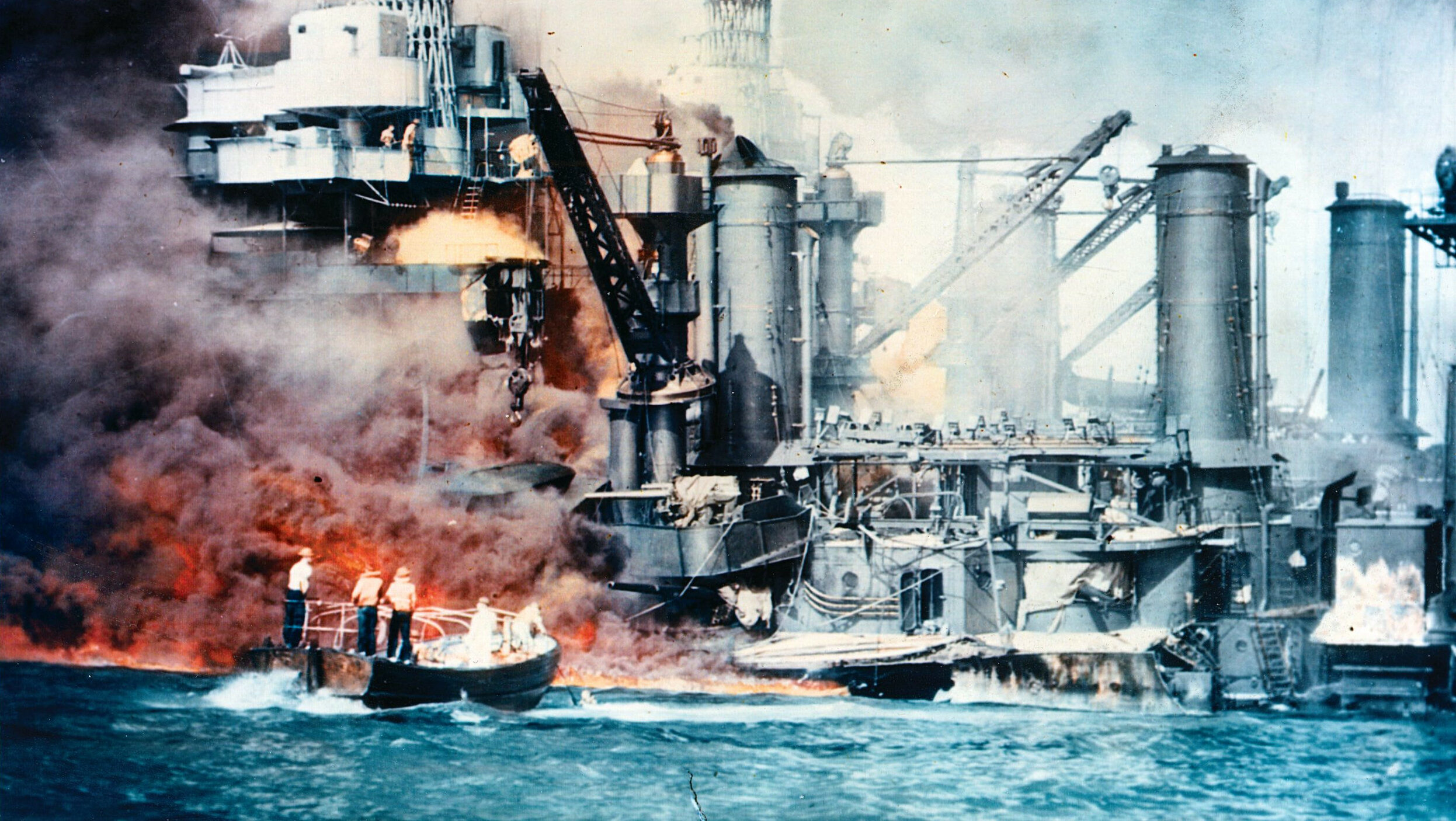
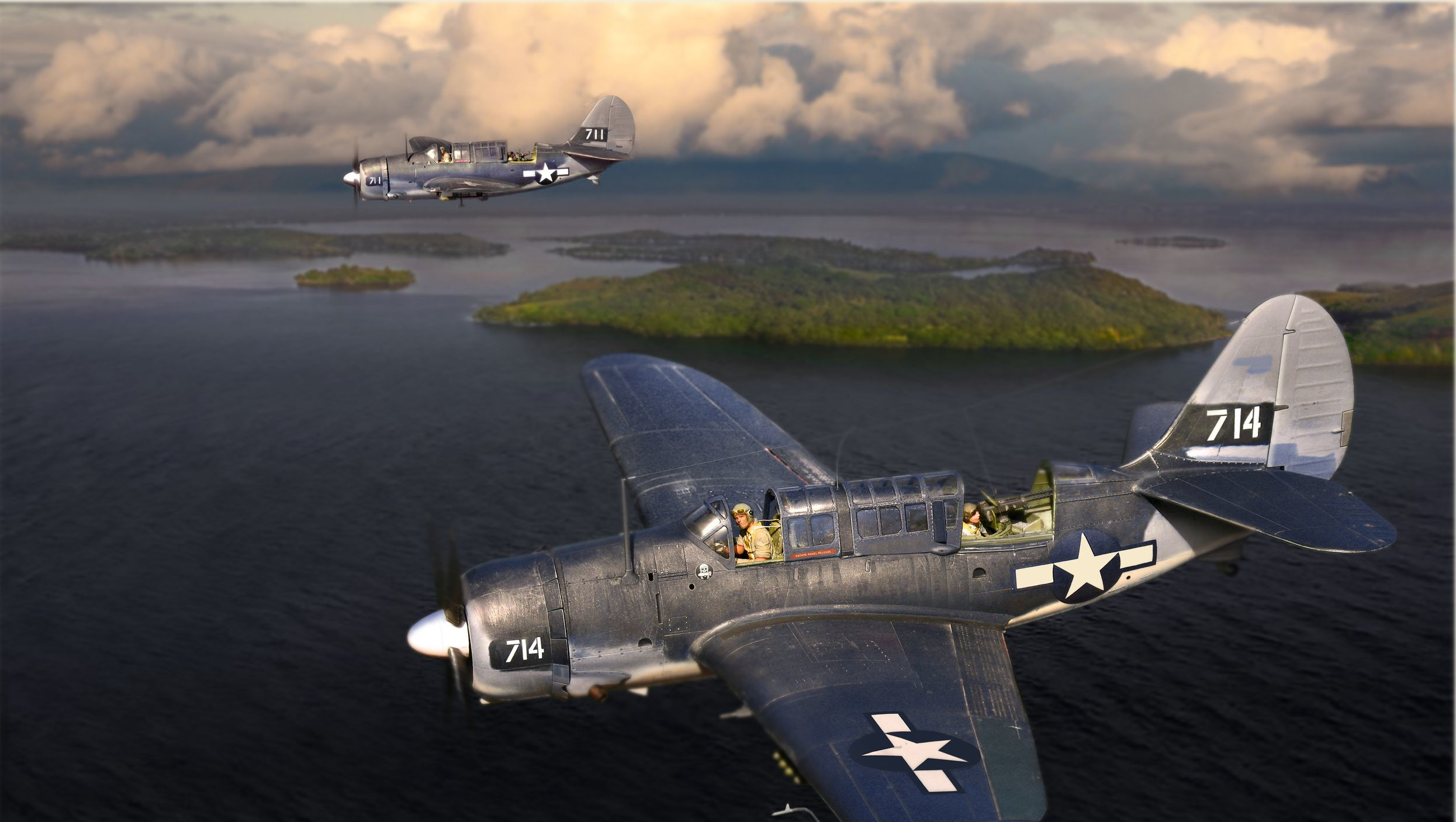
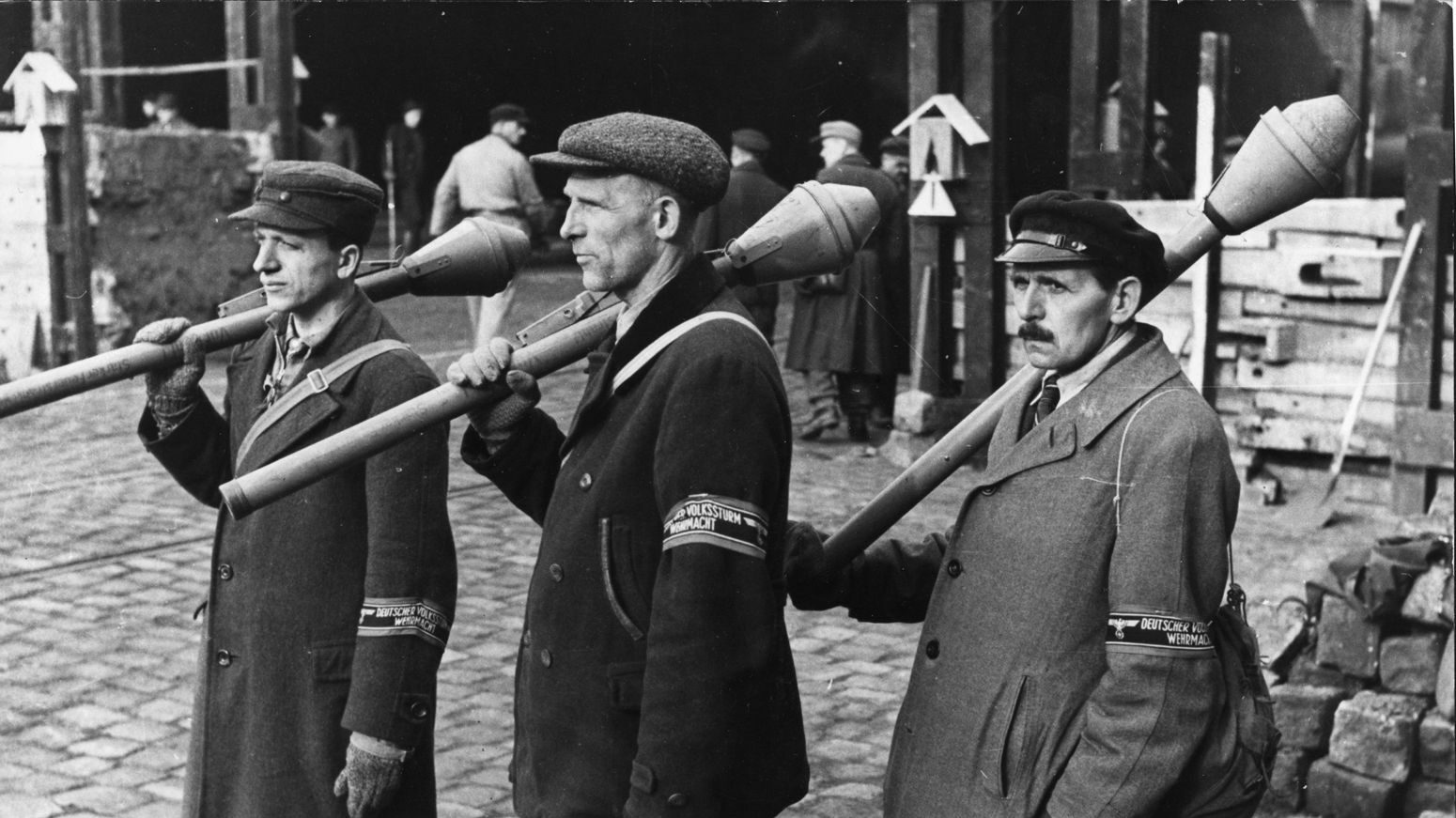
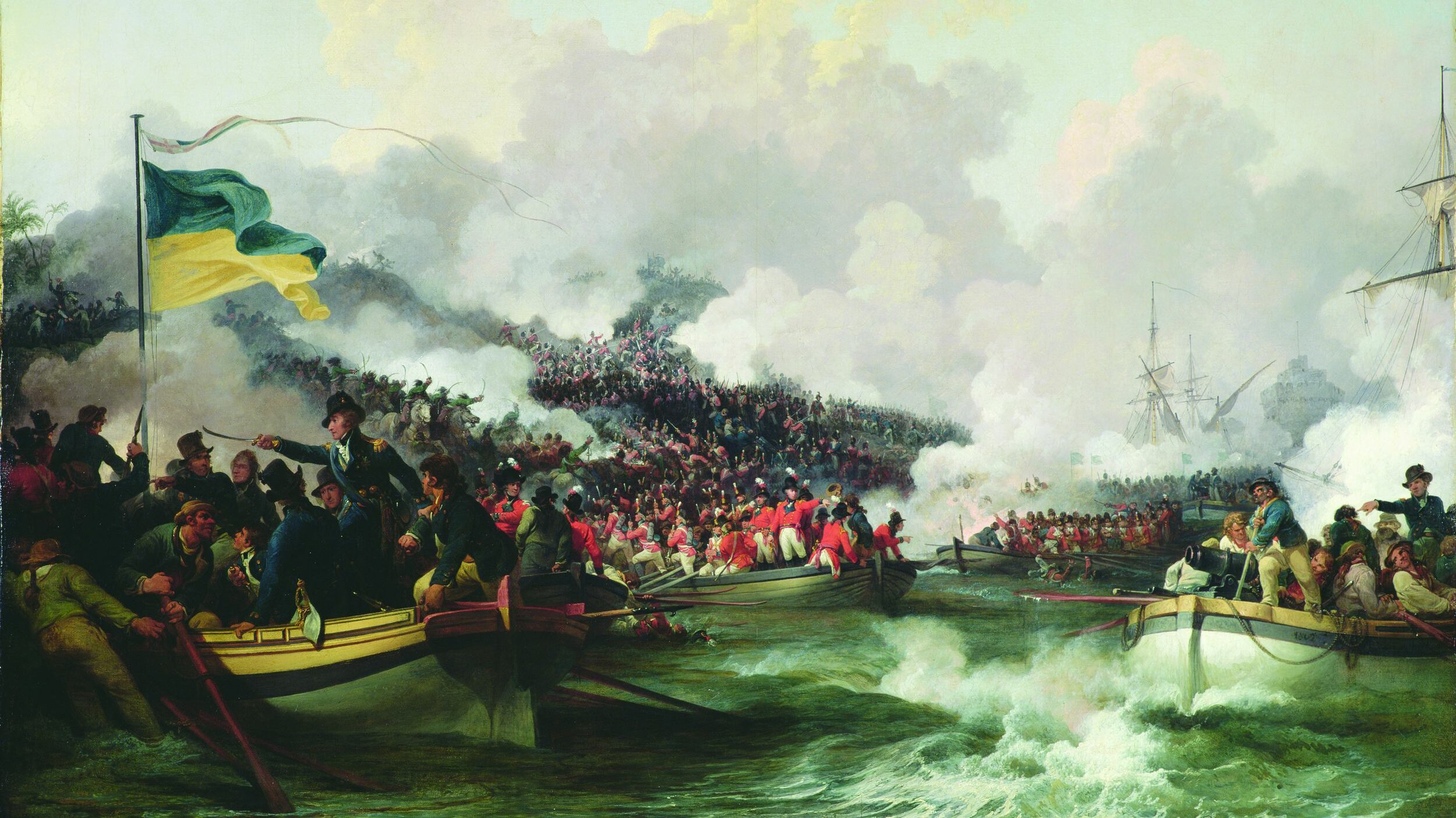
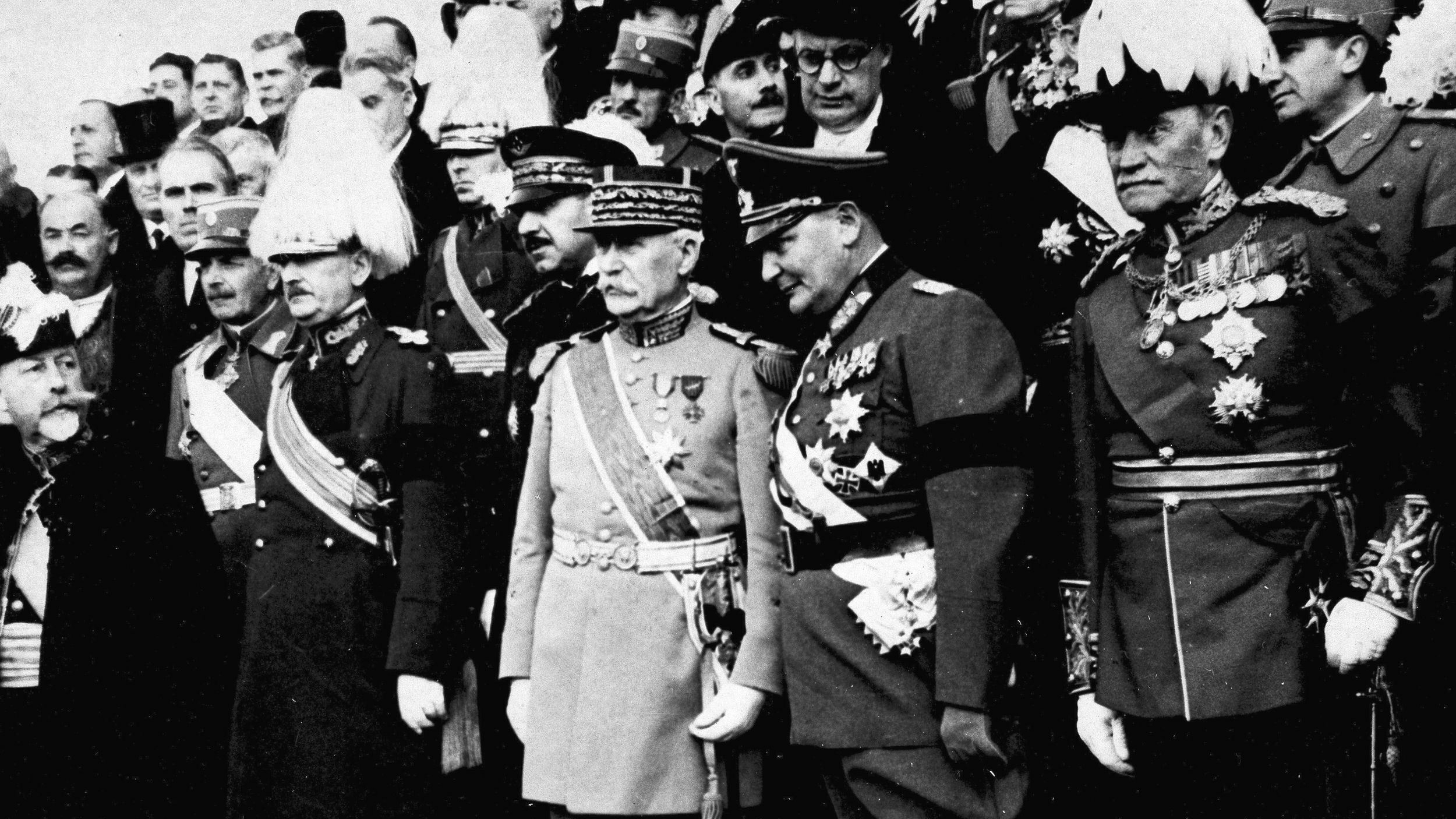
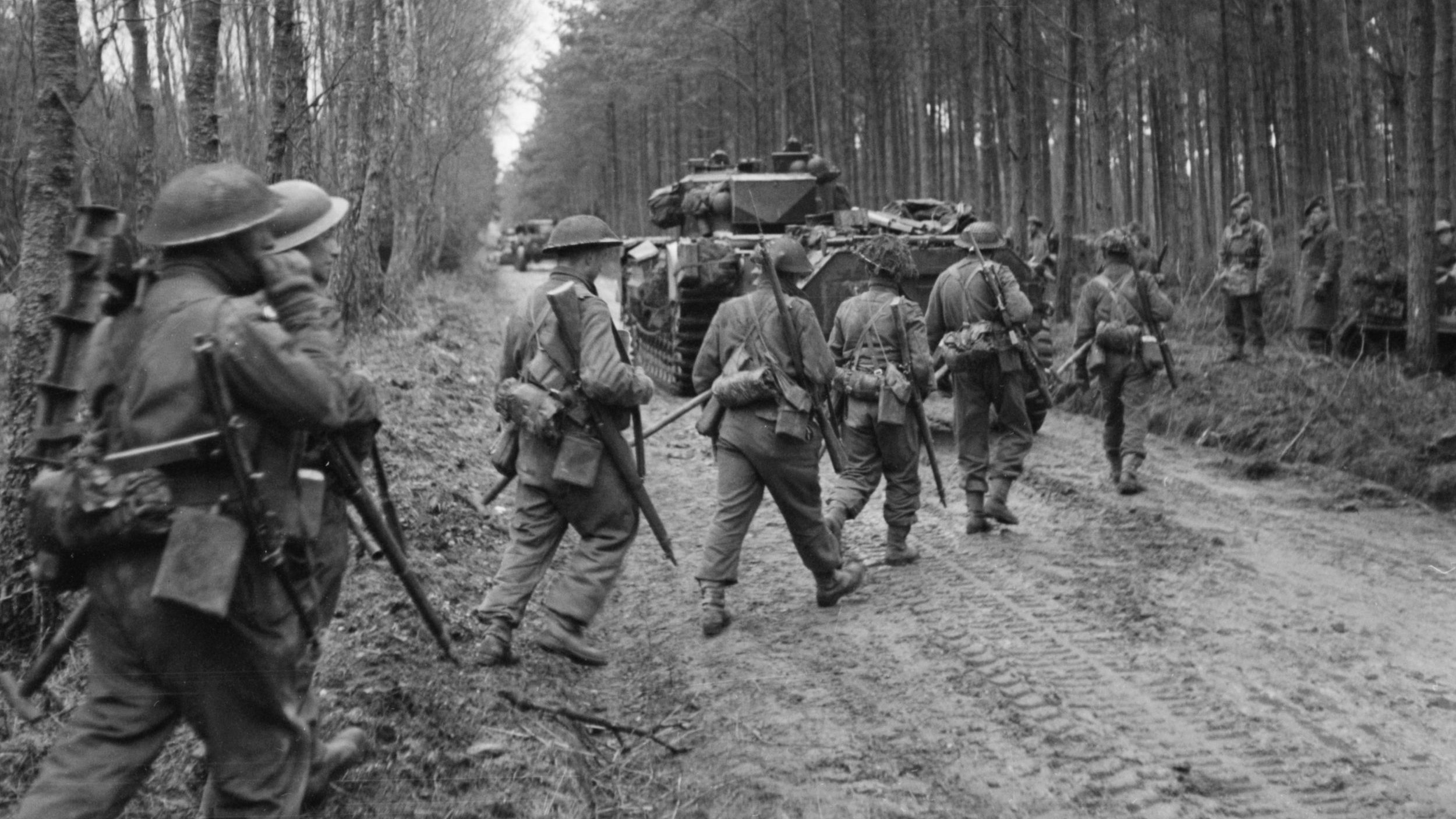
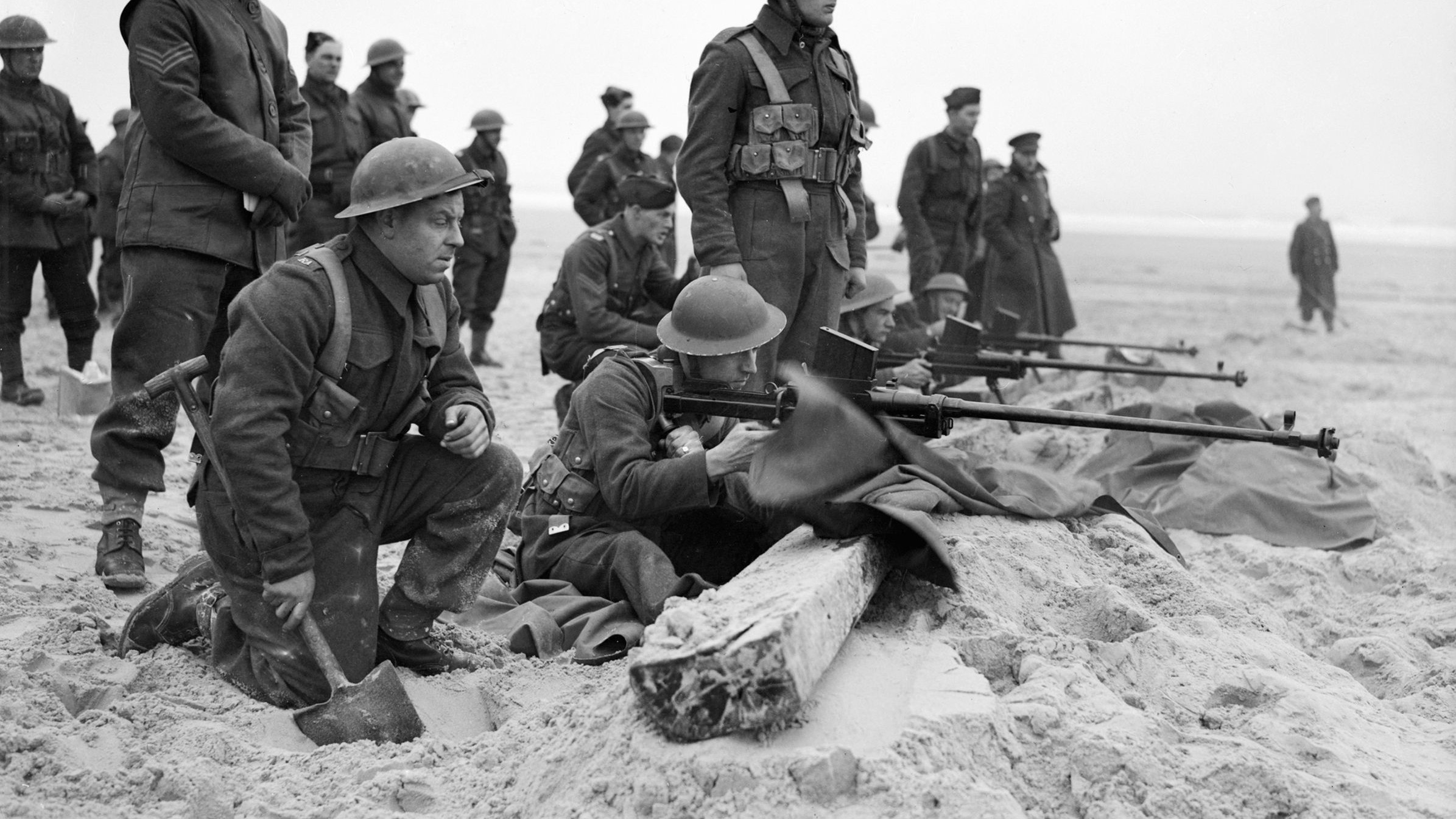
Why do you have a source from David Irving? Just curious.
Mostly nonsense from top the bottom. The Sherman was perfectly- even against the few Tigers and Panthers they met.
Even against Tigers and Panthers as long as by luck it never met them?
There seems to be such a strong emotional attachment to the Sherman that people can’t accept the reality of the shortcomings it obviously had.
because david irving is an expert in german warfair
Nothing Ironic that the inferior m4 met under 20% of the german armour on westfront and still manage to loose over 25.000 m4, while the german armour destroyed 83.000 sovjet tanks on the other front ….. 55.000 of them t34 … the bolsjeviks saved the m4 from getting erased
Overall, US armor destroyed more German tanks than German tanks destroyed US tanks, by a factor of about 3:2. Germans couldn’t keep the Panthers and Tigers on the battlefield because of engine problems. Shermans were easy to maintain and operate.
Overall, US armor destroyed more German tanks than German tanks destroyed US tanks, by a factor of about 3:2. And, Germans couldn’t keep the Panthers and Tigers operational. They had 50% breakdowns on the battlefield, whether from combat or engine trouble. Shermans were easy to maintain and operate. Plus, there were 8-10 Shermans for every Panther or Tiger.
“In fact, to destroy a German Tiger, the Shermans had to hit it from the side or from behind…”
And even then, better be sure you aren’t firing paint!
(Fans of “Kelly’s Heroes” will get the reference.)